3 Process approach T 22
3.1 Definitions
Terms and definitions

The beginning of wisdom is the definition of terms. Socrates
Some definitions and acronyms:
Competence: personal skills, knowledge and experiences
Conformity: fulfillment of a specified requirement
Customer: anyone who receives a product
Effectiveness: capacity to realize planned activities with minimum efforts
Efficiency: financial relationship between achieved results and used resources
FMEA: failure mode and effects analysis
Indicator: value of a parameter, associated with an objective, allowing the objective measure of its effectiveness
Interested party: person, group or company affected by the impacts of an organization
Life-cycle: all phases in the life of a product, from design to disposal
Management system: set of processes allowing objectives to be achieved
Organization (company): a structure that satisfies a need
Performance: measurable and expected results of the management system
Process: activities that transform inputs into outputs
Product (or service): fevery result of a process or activity
QMS: quality management system
Quality: aptitude to fulfill requirements
Quality management: activities allowing the control of an organization with regard to quality
Quality management system: set of processes allowing the achievement of the quality objectives
Quality objective: related to quality, measurable goal that must be achieved
Quality policy: statement by top management allowing the establishment of quality objectives
Requirement: explicit or implicit need or expectation
Risk: likelihood of occurrence of a threat or an opportunity
Supplier: an entity that provides a product
System: set of interacting processes
Certain terms specific to the medical sector:
Advisory notice: notice on the use, modification, return or distribution of a medical device
Medical device: product or service to be used for purposes of diagnosis, prevention, monitoring, treatment, alleviation of disease or injury
A medical deviceproduct or service to be used for purposes of diagnosis, prevention, monitoring, treatment, alleviation of disease or injury (MD) is any object or service for medical purposes but it cannot be a drug or a biological productany outcome of a process or activity (see also ISO 9000, 3.4.2).
Examples of medical devicesproduct or service to be used for purposes of diagnosis, prevention, monitoring, treatment, alleviation of disease or injury: a syringe, a stethoscope, crutches, an insulin pump, dressings, a surgical robot.
In the terminology of integrated management systemsset of processes allowing objectives to be achieved (see also ISO 9000, 3.5.3), do not confuse:
- accident and incident
- an accident is an unexpected serious event
- an incident is an event that can lead to an accident
- anomaly, defect, dysfunction, failure, nonconformity,reject and waste
- anomaly is a deviation from what is expected
- defect is the non-fulfillment of a requirement related to an intended use
- dysfunction is a degraded function that can lead to a failure
- failure is when a function has become unfit
- nonconformity is the non-fulfillment of a requirement in production
- reject is a nonconforming product that will be destroyed
- waste is when there are added costs but no value
- audit, auditee, auditor and inspection
- an audit is used to find deviations in relation to a standard
- an auditee is the one who is audited
- an auditor is the one who conducts the audit
- an inspection is the verification of the conformity of a process or product
- audit program and plan
- an audit program is the annual planning of the audits
- an audit plan is the description of the audit activities
- control and optimization
- control is the attainment of the objective
- optimization is the search for the best possible results
- customer, supplier and subcontractor
- a customer receives a product
- a supplier provider provides a service or a product
- a subcontractor provides a product or service on which a specific work is done
- effectiveness and efficiency
- effectiveness is the level of achievement of planned results
- efficiency is the ratio between results and resources
- follow-up and review
- follow-up is the verification of the obtained results of an action
- review is the analysis of the effectiveness in achieving objectives
- inform and communicate
- to communicate is to pass on a message, to listen to the reaction and discuss
- to inform is to give someone meaningful data
- objective and indicator
- an objective is a saught after commitment
- an indicator is the information on the difference between the pre-set objective and the achieved result
- organization and enterprise, society, company
- organization is the term used by the ISO 9001 standard as the entity between the supplier and the customer
- an enterprise, society and company are examples of organizations
- procedure, process, product, activity and task
- a procedure is the description of how we should conform to the rules
- a process is how we satisfy the customer using people to achieve the objectives
- a product is the result of a process
- an activity is a set of tasks
- a task is a sequence of simple operations
Remark 1: the use of ISO 9000 and ISO 13485 definitions is recommended. The most important thing is to determine a common and unequivocal vocabulary for everyone in the company.
Remark 2: the customer can also be the user, the beneficiary, the trigger, the ordering party or the consumer.
Remark 3: documentation is any information that we must maintain (procedure .gif) ) or retain (record
) or retain (record .gif) ).
).
For other definitions, comments, explanations and interpretations that you don’t find in this module and annex 06, you can consult: .jpg)

- ISO Online Browsing platform (OBP)
- IEC Electropedia
- ISO 9000: 2015 - Quality management systems. Fundamentals and vocabulary
- Study Group 1 Final Document GHTF/SG1/N68, Essential Principles of Safety and Performance of Medical Devices, 2012
- ISO/GUIDE 73 - Risk management - Vocabulary / Management du risque - Vocabulaire, ISO, 2009
- ISO 11139 (2018), Sterilization of health care products - Vocabulary of terms used in sterilization and related equipment and process standards
.jpg) Minute of relaxation. Game: Procedure
Minute of relaxation. Game: Procedure
Books for further reading on quality and medical devices: .jpg)
.jpg) Philip Crosby, Quality is free; the Art of Making Quality Certain, McGraw-Hill, 1979
Philip Crosby, Quality is free; the Art of Making Quality Certain, McGraw-Hill, 1979.jpg) Kaoru Ishikawa, What is Total Quality Control, The Japanese Way, Prentice-Hall, 1981
Kaoru Ishikawa, What is Total Quality Control, The Japanese Way, Prentice-Hall, 1981.jpg) Edwards Deming, Out of the Crisis, MIT Press, 1982
Edwards Deming, Out of the Crisis, MIT Press, 1982(1).jpg) Eliyahu Goldratt, Jeff Cox, The Goal, A Process of Ongoing Improvement, North River Press, 1984
Eliyahu Goldratt, Jeff Cox, The Goal, A Process of Ongoing Improvement, North River Press, 1984.jpg) Masaaki Imai, KAIZEN, The Key to Japan’s Competitive Success, McGraw-Hill, 1986
Masaaki Imai, KAIZEN, The Key to Japan’s Competitive Success, McGraw-Hill, 1986(1).jpg) James Harrington, Poor-Quality Cost, Dekker, 1987
James Harrington, Poor-Quality Cost, Dekker, 1987 .jpg) Dennis Green, Medical Devices: ISO 13485 and ISO 9001, BSI, 2005
Dennis Green, Medical Devices: ISO 13485 and ISO 9001, BSI, 2005(2).jpg) Larry Webber, Michael Wallace, Quality Control for Dummies, Wiley, 2007
Larry Webber, Michael Wallace, Quality Control for Dummies, Wiley, 2007.jpg) Shayne C. Gad, Marian G. McCord, Safety Evaluation in the Development of Medical Devices and Combination Products, CRC Press, 2008
Shayne C. Gad, Marian G. McCord, Safety Evaluation in the Development of Medical Devices and Combination Products, CRC Press, 2008.jpg) Eric Myhrberg, A Practical Field Guide for Iso 13485 2003, ASQ, 2013
Eric Myhrberg, A Practical Field Guide for Iso 13485 2003, ASQ, 2013.jpg) Ann Goodall, Implementing an ISO 13485 Quality Management System for Medical Devices, BSI, 2014
Ann Goodall, Implementing an ISO 13485 Quality Management System for Medical Devices, BSI, 2014.jpg) Denise Robitaille, The (Almost) Painless ISO 9001:2015 Transition, Paton Professional, 2015
Denise Robitaille, The (Almost) Painless ISO 9001:2015 Transition, Paton Professional, 2015.jpg) Jan Gillet, Implementing Iso 9001:2015: Thrill your customers and transform your cost base with the new gold standard for business management, Infinite Ideas, 2015
Jan Gillet, Implementing Iso 9001:2015: Thrill your customers and transform your cost base with the new gold standard for business management, Infinite Ideas, 2015.jpg) Craig Cochran, ISO 9001:2015 in Plain English, Paton Professional, 2015
Craig Cochran, ISO 9001:2015 in Plain English, Paton Professional, 2015.jpg) Charles Cianfrani, John West, ISO 9001:2015 Explained, ASQ Quality Press, 2015
Charles Cianfrani, John West, ISO 9001:2015 Explained, ASQ Quality Press, 2015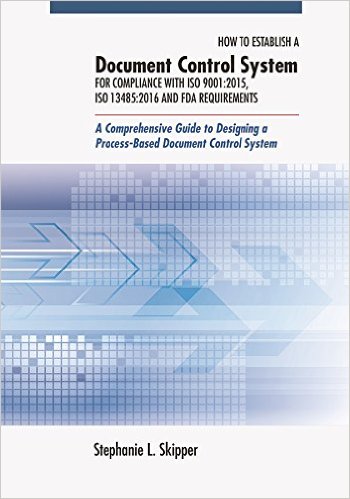 Stephanie Skipper, How to Establish a Document Control System for Compliance with ISO 9001:2015, ISO 13485:2016, and FDA Requirements, ASQ Quality Press, 2015
Stephanie Skipper, How to Establish a Document Control System for Compliance with ISO 9001:2015, ISO 13485:2016, and FDA Requirements, ASQ Quality Press, 2015 Nikolas F. Kerr, Tony Recupero, Product Launch: Practical Guide to Launching Medical Device Products, Kerr Consulting Group LLC, 2015
Nikolas F. Kerr, Tony Recupero, Product Launch: Practical Guide to Launching Medical Device Products, Kerr Consulting Group LLC, 2015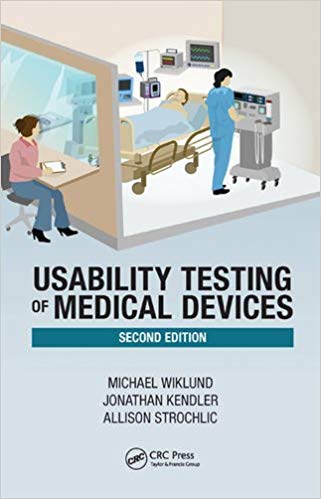 Michael Wiklund et al, Usability testing of medical devices, CRC Press, 2015
Michael Wiklund et al, Usability testing of medical devices, CRC Press, 2015.jpg) Denise Robitaille, ISO 9001:2015 Handbook for Small and Medium-Sized Businesses, Quality Press, 2016
Denise Robitaille, ISO 9001:2015 Handbook for Small and Medium-Sized Businesses, Quality Press, 2016.jpg) Jeremy Hazel, José Dominguez, Jim Collins, Memory Jogger ISO 9001:2015: What Is It? How Do I Do It? Tools and Techniques to Achieve It, Goal/QPC, 2016
Jeremy Hazel, José Dominguez, Jim Collins, Memory Jogger ISO 9001:2015: What Is It? How Do I Do It? Tools and Techniques to Achieve It, Goal/QPC, 2016.jpg) Alka Jarvis, Paul Palmes, ISO 9001: 2015: Understand, Implement, Succeed!, Prentice hall, 2016
Alka Jarvis, Paul Palmes, ISO 9001: 2015: Understand, Implement, Succeed!, Prentice hall, 2016.jpg) Ray Tricker, ISO 9001:2015 for Small Businesses, Routledge, 2016
Ray Tricker, ISO 9001:2015 for Small Businesses, Routledge, 2016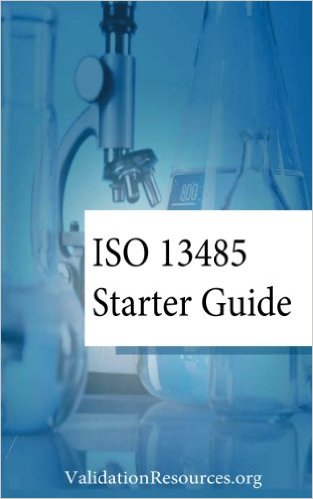 Emmet Tobin, ISO 13485 Starter Guide, CreateSpace, 2016
Emmet Tobin, ISO 13485 Starter Guide, CreateSpace, 2016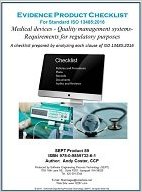 SEPT, Checklist for ISO 13485:2016, medical devices - quality management systems- requirements for regulatory purposes, Software Engineering Process Technology, 2016
SEPT, Checklist for ISO 13485:2016, medical devices - quality management systems- requirements for regulatory purposes, Software Engineering Process Technology, 2016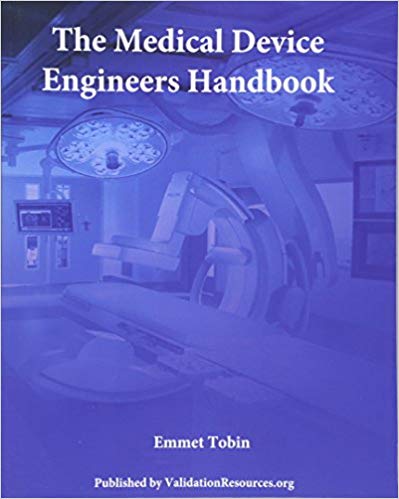 Emmet Tobin, The Medical Device Engineers Handbook, CreateSpace Independent Publishing Platform, 2016
Emmet Tobin, The Medical Device Engineers Handbook, CreateSpace Independent Publishing Platform, 2016.jpg) Brendan Cooper, ISO 13485 - the Quality Management System for Medical Devices, CreateSpace Independent Publishing Platform, 2017
Brendan Cooper, ISO 13485 - the Quality Management System for Medical Devices, CreateSpace Independent Publishing Platform, 2017 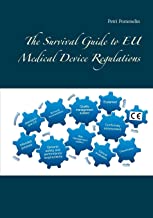 Petri Pommelin, The Survival Guide to Eu Medical Device Regulations, Books on Demand, 2017
Petri Pommelin, The Survival Guide to Eu Medical Device Regulations, Books on Demand, 2017 Emmet Tobin, Process Validation for Medical Devices, CreateSpace Independent Publishing Platform, 2017
Emmet Tobin, Process Validation for Medical Devices, CreateSpace Independent Publishing Platform, 2017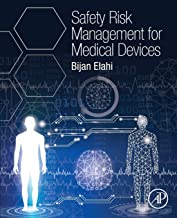 Bijan Elahi, Safety Risk Management for Medical Devices, Academic Press, 2018
Bijan Elahi, Safety Risk Management for Medical Devices, Academic Press, 2018 Itay Abuhav, ISO 13485:2016: A Complete Guide to Quality Management in the Medical Device Industry, Second Edition, CRC Press, 2018
Itay Abuhav, ISO 13485:2016: A Complete Guide to Quality Management in the Medical Device Industry, Second Edition, CRC Press, 2018.jpg) Dyadem Press, Guidelines for FMEA for Medical Devices, CRC Press, 2018
Dyadem Press, Guidelines for FMEA for Medical Devices, CRC Press, 2018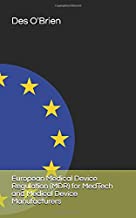 Des O'Brien, European Medical Device Regulation (MDR) for MedTech and Medical Device Manufacturers, Independently published, 2019
Des O'Brien, European Medical Device Regulation (MDR) for MedTech and Medical Device Manufacturers, Independently published, 2019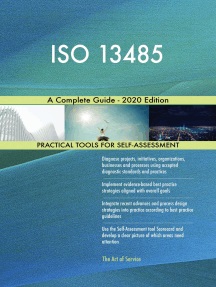 Gerardus Blokdyk, ISO 13485 A Complete Guide - 2020 Edition, 5STARCooks, 2020
Gerardus Blokdyk, ISO 13485 A Complete Guide - 2020 Edition, 5STARCooks, 2020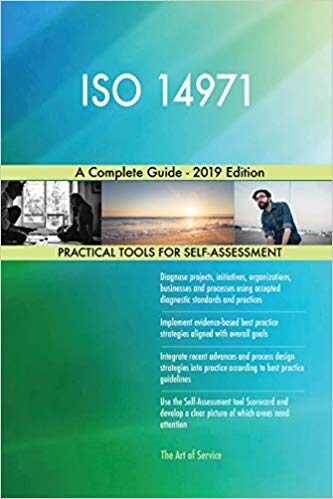 Gerardus Blokdyk, ISO 14971 A Complete Guide - 2021 Edition, 5STARCooks, 2021
Gerardus Blokdyk, ISO 14971 A Complete Guide - 2021 Edition, 5STARCooks, 2021
When I think of all the books still left for me to read, I am certain of further happiness. Jules Renard
3.2 Process
Process types, management, realization and support processes
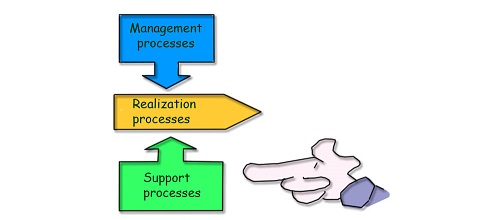
The word processactivities that transform inputs into outputs (see also ISO 9000, 3.4.1) comes from the Latin root procedere = go, development, progress (Pro = forward, cedere = go). Each processactivities that transform inputs into outputs (see also ISO 9000, 3.4.1) transforms inputs into outputs creating added value and potential nuisances.
A processactivities that transform inputs into outputs (see also ISO 9000, 3.4.1) has three basic elements: inputs, activities and outputs. .jpg)
A processactivities that transform inputs into outputs (see also ISO 9000, 3.4.1) can be very complex (launch a rocket) or relatively simple (audit a productany outcome of a process or activity (see also ISO 9000, 3.4.2)). A processactivities that transform inputs into outputs (see also ISO 9000, 3.4.1) is:
- repeatable
- foreseeable
- measurable
- definable
- dependent on its context
- responsible for its external providers
A processactivities that transform inputs into outputs (see also ISO 9000, 3.4.1) is, among other things, determined by its:
- title and type
- purpose (why?)
- beneficiary (for whom?)
- scope and activities
- initiators
- documents and records
- inputs
- outputs (intentional and not intentional)
- constraints
- occupational health and safety environment
- resources:
- people
- material
- objectives and indicators
- person in charge (owner) and actors (participants)
- means of inspection (monitoring, measurement)
- mapping
- interaction with other processes
- risks and potential deviations
- opportunities for continual improvement
Inspection: the actions of measuring, testing and examining a process, product, service or material to establish whether requirements are met
A processactivities that transform inputs into outputs (see also ISO 9000, 3.4.1) reviewa survey of a file, product, process so as to verify whether preset objectives are achieved (see also ISO 9000, 3.11.2) is conducted periodically by the processactivities that transform inputs into outputs (see also ISO 9000, 3.4.1) owner (cf. annex 02). 
The components of a processactivities that transform inputs into outputs (see also ISO 9000, 3.4.1) are shown in figure 3-1: .jpg)
.gif)
Figure 3-1. Components of a process
- which materials, which documents, which toolings? (inputs)
- which title, what objective, which activities, requirements, constraints? (process)
- which products, which documents? (outputs)
- how, which inspections? (methods)
- what is the level of performance? (indicators)
- who, with which competences? (people)
- with what, which machines, which equipment? (material resources)
.jpg)
Figure 3-2. Some elements of a process
Often the output of a processactivities that transform inputs into outputs (see also ISO 9000, 3.4.1) is the input of the next processactivities that transform inputs into outputs (see also ISO 9000, 3.4.1).
You can find some examples of processactivities that transform inputs into outputs (see also ISO 9000, 3.4.1) sheets in the documentany support allowing the treatment of information (see also ISO 9000, 3.8.5) pack D 02 and a list of processes in annex 03. 
Any organization (company) can be considered as a macro processactivities that transform inputs into outputs (see also ISO 9000, 3.4.1), with its purpose, its inputs (customeranyone who receives a product (see also ISO 9000, 3.2.4) needs and expectations) and its outputs (products/services to meet customeranyone who receives a product (see also ISO 9000, 3.2.4) requirementsexplicit or implicit need or expectation (see also ISO 9000, 3.6.4)).
Our preference is to identify a processactivities that transform inputs into outputs (see also ISO 9000, 3.4.1) using a verb (buy, produce, sell) instead of a noun (purchases, production, sales) to differentiate the processactivities that transform inputs into outputs (see also ISO 9000, 3.4.1) from the company's department or documented information to maintain and recall the purpose of the processactivities that transform inputs into outputs (see also ISO 9000, 3.4.1).
The processesactivities that transform inputs into outputs (see also ISO 9000, 3.4.1) are (as we shall see in the following paragraphs) of management, realization and support types. Do not attach too much importance to processactivities that transform inputs into outputs (see also ISO 9000, 3.4.1) categorizing (sometimes it's very relative) but ensure that all the company's activities at least fall into one processactivities that transform inputs into outputs (see also ISO 9000, 3.4.1).
3.2.1 Management processes
Management processesactivities that transform inputs into outputs (see also ISO 9000, 3.4.1) are also known as piloting, decision, key or major processesactivities that transform inputs into outputs (see also ISO 9000, 3.4.1). They are part in the overall organization and include elaboration of the policy, deployment of the objectives and all needed checks. They are the glue of all the realization and support processesactivities that transform inputs into outputs (see also ISO 9000, 3.4.1).
The following processesactivities that transform inputs into outputs (see also ISO 9000, 3.4.1) can be part of this family:
- develop strategy
- establish policy
- address risks
- plan the QMS
- communicate
- conduct management review
- acquire and manage resources
- establish process ownership
- manage feedback
- conduct an audit
- analyze data
- improve
3.2.2 Realization processes
The realization (operational) processesactivities that transform inputs into outputs (see also ISO 9000, 3.4.1) are related to the productany outcome of a process or activity (see also ISO 9000, 3.4.2) and contribute directly to increase the added value.
They are mainly:
- manage outsourced processes
- design and develop new products
- purchase (components)
- sell products
- produce medical devices
- sterilize components and products
- monitor after marketing
- evaluate the benefit/risk ratio
- maintain equipment
- implement traceability
- receive, store and deliver
- inspect production
- control nonconformities
- carry out FMEA
- implement corrective and preventive actions
3.2.3 Support processes
The support processesactivities that transform inputs into outputs (see also ISO 9000, 3.4.1) provide the resources necessary for the proper functioning of all other processesactivities that transform inputs into outputs (see also ISO 9000, 3.4.1). They are not directly related to a contribution of the productany outcome of a process or activity (see also ISO 9000, 3.4.2)'s added value, but are still essential.
The support processesactivities that transform inputs into outputs (see also ISO 9000, 3.4.1) are often:
- control documentation
- provide information
- manage staff
- provide training
- keep accountability
- acquire and maintain infrastructure
- manage inspection means
3.3 Process mapping
Process mapping and house
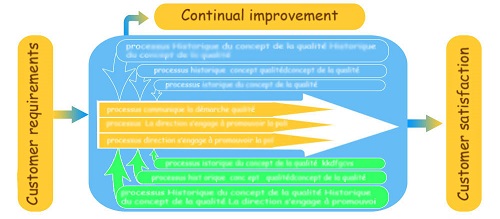
Par excellence processactivities that transform inputs into outputs (see also ISO 9000, 3.4.1) "mapping" is a multidisciplinary work. This is not a formal requirementexplicit or implicit need or expectation (see also ISO 9000, 3.6.4) of either ISO 13485 or ISO 9001 but is always welcome.
The three types of processesactivities that transform inputs into outputs (see also ISO 9000, 3.4.1) and some interactions are shown in figure 3-3:
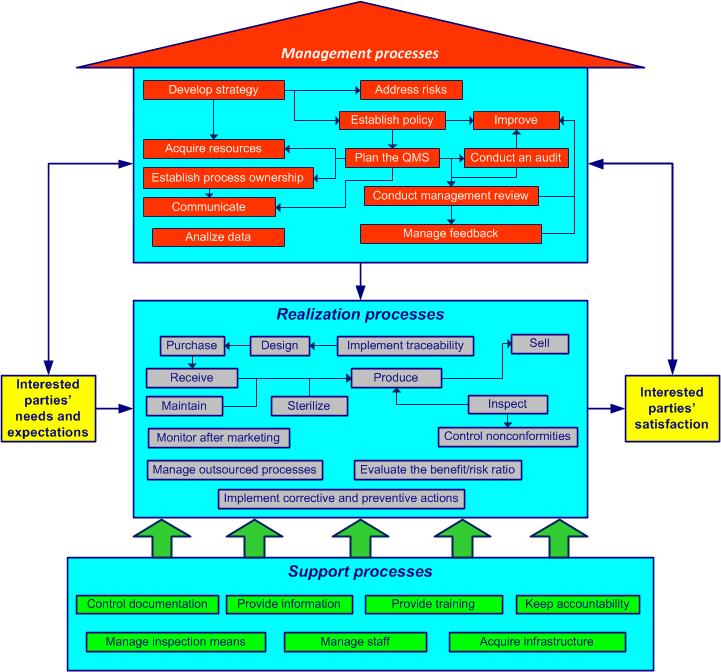
Figure 3-3. Process house
The mapping, among other things, lets you:
- obtain a global vision of the company
- identify the beneficiaries (customers), flow and interactions
- define rules (simple) for communication between processes
.jpg)
- develop strategy
- establish policy
- address risks
- plan the QMS
- deploy objectives
- acquire resources
- establish process ownership
- improve
Two other processactivities that transform inputs into outputs (see also ISO 9000, 3.4.1) examples ("design", figure 3-4 and "produce", figure 3-5) are: .jpg)
.jpg)
Figure 3-4. Design process
.gif)
Figure 3-5. Produce process
.jpg) Minute of relaxation. Game: Process
Minute of relaxation. Game: Process
3.4 Process approach
Process approach and improvement
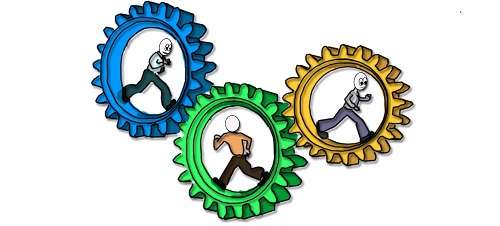
Simple solutions for now, perfection for later
The process approachmanagement by the processes to better satisfy customers, improve the effectiveness of all processes and increase global efficiency (see also ISO 9001, 03) contributes enormously to the efficient management of the organizationa structure that satisfies a need (see also ISO 9000, 3.2.1) (cf. annex 04). 
Process approach: management by the processes to better satisfy customers, improve the effectiveness of all processes and increase global efficiency
When the process approachmanagement by the processes to better satisfy customers, improve the effectiveness of all processes and increase global efficiency (see also ISO 9001, 03) is included during the development, implementation and maintenance of a QMSQuality Management System, it allows one to achieve objectives that are related to the effectivenesscapacity to perform planned activities with minimum effort (see also ISO 9000, 3.7.11) of the QMSQuality Management System, as is shown in figure 3-6.
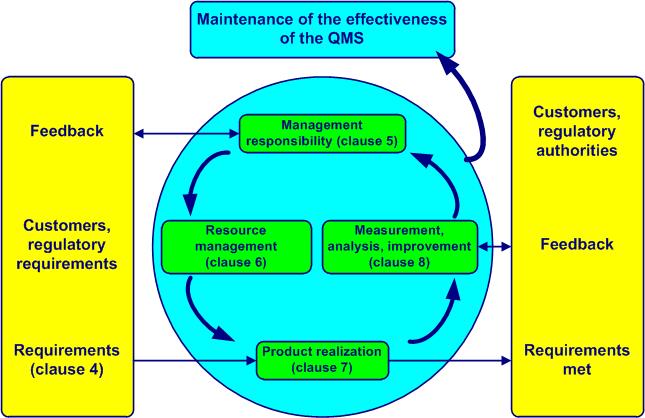
Figure 3-6. Model of an integrated management system based on process approach and maintenance of the effectiveness
- emphasizes the importance of:
- understanding and complying with customer requirements
- of prevention so to react to unwanted elements such as:
- customer returns
- waste
- measuring process performance, effectiveness and efficiency
- permanently improving objectives based on pertinent measurements
- process added value
- relies on:
- methodical identification
- interactions
- the sequence and
- process management, which consists of:
- determining objectives and their indicators
- piloting related activities
- analyzing obtained results
- allows one to:
- better view inputs and outputs and their relationship
- clarify roles and responsibilities
- judiciously assign necessary resources
- break down barriers between departments
- decrease costs, delays and waste
- and ensures in the long run:
- control
- monitoring and
- improvement of processes
- crisis management ("You will not solve the problems by addressing the effects")
- blaming people ("Poor quality is the result of poor management." Masaaki Imai)
- prioritizing investments ( "Use your brain, not your money." Taiichi Ohno)
 Minute of relaxation. Paganini's violin concert performed with facial expressions.
Minute of relaxation. Paganini's violin concert performed with facial expressions.
